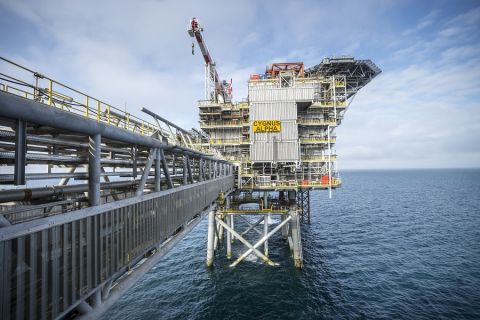U.S. natural gas futures dropped about 9% on Sept. 15 on a bigger-than-expected storage build and a possible deal that would avert a rail strike, after soaring 10% in the prior session on worries such a walkout would boost demand for gas by threatening coal supplies to power plants.
U.S. railway parties have agreed to a cooling-off period as a standard part of the ratification process after reaching a tentative deal overnight, a move that would avert any shutdown in case unions fail to ratify it, according to a source familiar with the situation.
RELATED
US Northeast Faces Potential Energy Shortages as Rails Start to Shut
Coal fuels about 20% of U.S. power generation. About two-thirds of the nation's coal-fired power plants receive their coal by rail. When coal or any other fuel is not available for power generation, energy firms usually burn more gas to produce power. Gas already provides about 37% of U.S. electricity.
The U.S. Energy Information Administration (EIA) said utilities added 77 Bcf of gas to storage during the week ended Sept. 9.
That was more than the 73-bcf build analysts forecast in a Reuters poll and compares with an increase of 78 Bcf in the same week last year and a five-year (2017-2021) average increase of 82 Bcf.
Even though the build was bigger than expected, it was still smaller than normal because power generators burned lots of gas last week to keep air conditioners humming during a heat wave, analysts said.
In addition to the rail deal, the drop in gas prices also came on expectations output would reach a monthly record in September and demand would decline when the Cove Point LNG plant in Maryland shuts for a couple weeks of maintenance in October.
U.S. gas demand has already been reduced for months by the ongoing outage at the Freeport LNG export plant in Texas has left more gas in the United States for utilities to inject into stockpiles for next winter.
Freeport, the second-biggest U.S. LNG export plant, was consuming about 2 Bcf/d of gas before it shut on June 8. Freeport LNG expects the facility to return to at least partial service in early to mid-November.
Front-month gas futures fell 83.5 cents, or 9.2%, to $8.279MMBtu at 10:36 a.m. EDT. In what has already been an extremely volatile year, that drop would be its biggest one-day percentage decline since late June.
On Sept. 14, the contract jumped over 10% to settle at its highest since Sept. 1. That was its biggest daily percentage gain since late July.
So far this year, gas futures were up about 122% as higher prices in Europe and Asia keep demand for U.S. LNG exports strong. Global gas prices have soared due to supply disruptions and sanctions linked to Russia's Feb. 24 invasion of Ukraine.
Gas was trading around $67/MMBtu in Europe and $53 in Asia. That would be a 6% gain for European prices.
Russian gas exports via the three main lines into Germany - Nord Stream 1 (Russia-Germany), Yamal (Russia-Belarus-Poland-Germany) and the Russia-Ukraine-Slovakia-Czech Republic-Germany route - have averaged just 1.3 Bcf/d so far in September, down from 2.5 Bcf/d in August and 10.8 Bcf/d in September 2021.
U.S. gas futures lag far behind global prices because the United States is the world's top producer with all the fuel it needs for domestic use, while capacity constraints and the Freeport outage prevents the country from exporting more LNG.
Data provider Refinitiv said average gas output in the U.S. Lower 48 states rose to 99.0 Bcf/d so far in September from a record 98.0 Bcf/d in August.
Recommended Reading
Eni, Vår Energi Wrap Up Acquisition of Neptune Energy Assets
2024-01-31 - Neptune retains its German operations, Vår takes over the Norwegian portfolio and Eni scoops up the rest of the assets under the $4.9 billion deal.
NOG Closes Utica Shale, Delaware Basin Acquisitions
2024-02-05 - Northern Oil and Gas’ Utica deal marks the entry of the non-op E&P in the shale play while it’s Delaware Basin acquisition extends its footprint in the Permian.
California Resources Corp., Aera Energy to Combine in $2.1B Merger
2024-02-07 - The announced combination between California Resources and Aera Energy comes one year after Exxon and Shell closed the sale of Aera to a German asset manager for $4 billion.
DXP Enterprises Buys Water Service Company Kappe Associates
2024-02-06 - DXP Enterprise’s purchase of Kappe, a water and wastewater company, adds scale to DXP’s national water management profile.
Pioneer Natural Resources Shareholders Approve $60B Exxon Merger
2024-02-07 - Pioneer Natural Resources shareholders voted at a special meeting to approve a merger with Exxon Mobil, although the deal remains under federal scrutiny.





